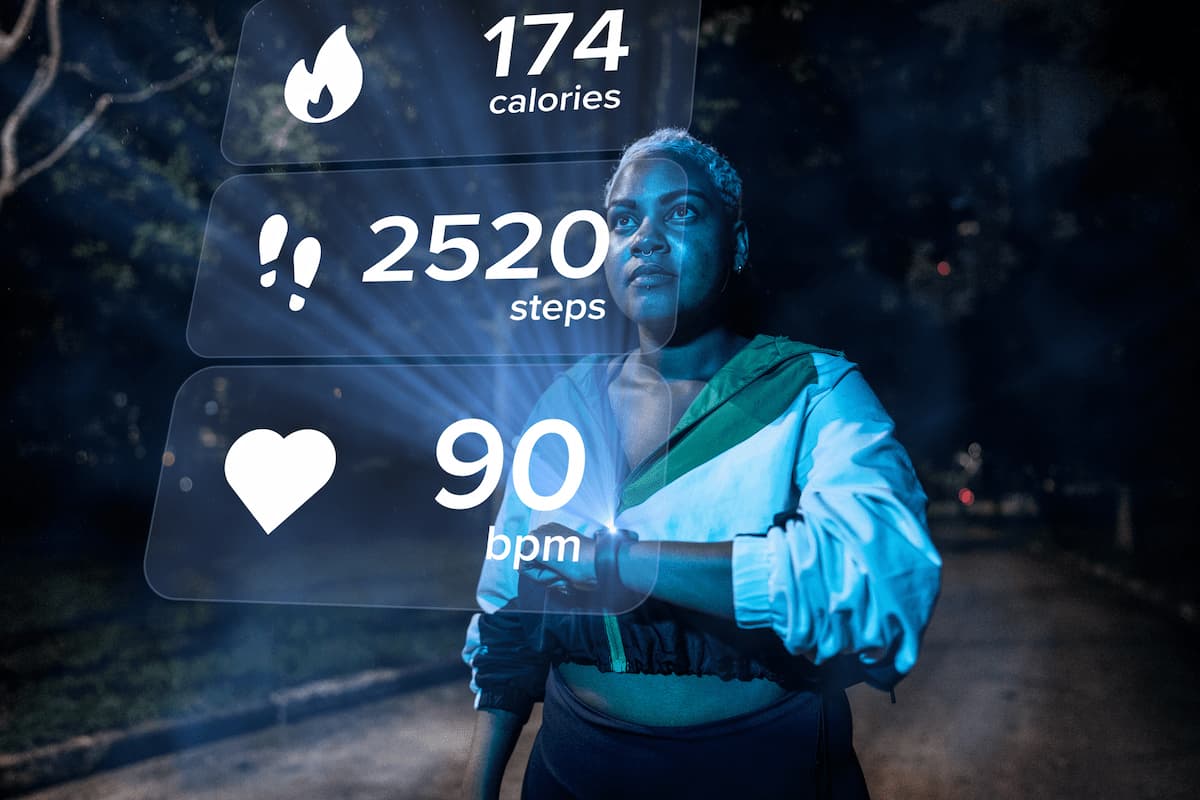Everyone has heard about the importance of steps as a key metric for tracking physical activity.
But quantifying their exact impact on our health and weight loss efforts can be confusing.
It’s time to reveal how many calories you can expect to burn with 15,000 daily steps and how factors like pace and body weight affect this estimation.
Determining Calories Burned Through Steps
The Importance of Step Count
Increasing your step count has been linked to various health benefits, such as improved cardiovascular function, better mental health, and reduced risk of chronic diseases.
One popular goal is achieving 10,000 steps per day, but some individuals set higher targets like 15,000 steps for added benefits or accelerated weight loss.
The real question is, how does this increased activity translate into calorie expenditure ?
Read more : How many miles is 10 000 steps (+ tips to get them daily) ?
Calories Burned Calculation Factors
To calculate how many calories your steps burn, three primary factors need to be taken into account: your body weight, distance covered, and exercise intensity. Here’s an overview of each:
- Body Weight: Heavier individuals generally burn more calories during physical activities than lighter individuals. As a result, body weight plays an essential role in determining caloric expenditure while walking or running.
- Distance Covered: The longer the distance traveled, the higher the caloric expenditure. Therefore, the number of steps matters when calculating calorie burn.
- Exercise Intensity: Faster pace (higher intensity) results in more calories burned compared to slower pace (lower intensity), even when covering the same distance. This means that each step does not necessarily represent an equal calorie burn.
Estimating Calorie Burn for 15000 Steps
Here’s the estimated calories burned while walking 15,000 steps at various speeds, assuming an average weight of 70 kg :
| 🏃 Speed (mph) | 🔥 Calories Burned |
|---|---|
| 2.0 | 696.02 |
| 2.5 | 596.59 |
| 3.0 | 546.88 |
| 3.5 | 511.36 |
| 4.0 | 472.30 |
| 4.5 | 441.92 |
| 5.0 | 427.56 |
| 5.5 | 415.81 |
| 6.0 | 414.30 |
A General Rule of Thumb
Although nutrition and fitness experts recommend personalized calorie calculations based on individual factors, some general estimations can serve as a starting point.
On average, an adult typically burns around 30-50 calories per 1,000 steps at a moderate pace depending on their body weight.
Based on this principle, you can estimate that 15,000 steps would equate to roughly 450-750 calories burned.
Introducing METs: Fine-Tuning Your Calculation
To further refine your estimation of calories burned, another useful metric is the Metabolic Equivalent Task (MET). A single MET represents the amount of oxygen used by the human body at rest, which serves as a baseline for comparing different activities in terms of energy expenditure.
Here are some relevant MET values for walking and running:
- Walking slowly (2 miles per hour): 2 METs
- Walking moderately (3 miles per hour): 3 METs
- Walking briskly (4 miles per hour): 4 METs
- Running (6 miles per hour): 9.5 METs
Using these values, you can now create a more accurate calculation of your caloric expenditure with the following formula:
Calories burned = MET value × body weight (in kilograms) × duration (in hours)
In light of this formula, let’s calculate the calories burned for a 70 kg individual taking 15,000 steps at a moderate pace (3mph), covering approximately 7.5 miles. Based on a MET value of 3, the individual would burn approximately:
Calories burned = 3 × 70 × (7.5 miles / 3 mph) = 3 × 70 × 2.5 hours = 525 calories
Keep in mind that the calculation above is just an example and should be adjusted according to your personal parameters.
Maximizing Your Calorie Burn from Walking or Running
Here’s the estimated calories burned while walking 15,000 steps for various body weights at a constant speed of 3.5 mph:
| 🏋️ Bodyweight (kg) | 🔥 Calories Burned |
|---|---|
| 50 | 365.26 |
| 60 | 438.31 |
| 70 | 511.36 |
| 80 | 584.42 |
| 90 | 657.47 |
| 100 | 730.52 |
Increasing Pace and Intensity
To obtain the most calorie-burning benefits from your steps, you may want to step up your pace. Faster, more intense activity will lead to higher energy expenditure.
Adding Incline or Resistance Training
If increasing pace is not feasible, another option to boost calorie expenditure is incorporating incline or resistance into your routine. Walking or running uphill requires greater muscular effort, resulting in added calorie burn. Additionally, carrying weights or wearing a weighted vest can increase the challenge and calories burned during your workout.
Maintaining Consistency and Gradually Increasing Step Count
Finally, the simplest way to enhance calorie expenditure over time is maintaining consistency with daily step goals, and gradually increasing them whenever comfortable. Regular physical activity is essential for reaping its weight loss and health benefits, so make sure to prioritize it as part of your lifestyle.







